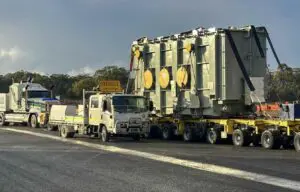State and federal energy ministers have voted unanimously to disband the Energy Security Board, replacing it with a new specialist “advisory” panel as part of a series of decisions designed to fast-track the connection of new wind, solar and storage in Australia’s main grid.
The meeting of energy ministers, held in Alice Springs on Friday, agreed on a new model called the Energy Advisory Panel (EAP), which they said would coordinate advice from the country’s main energy market bodies on security, reliability, and affordability of Australia’s east coast energy system.
The EAP will include the heads of the three energy market bodies – AEMO, AEMC and the AER – as well as the energy commissioner of the Australian Competition and Consumer Commission (ACCC) as an observer.
The move had been expected following market and ministerial frustration with the ESB, which many felt had become politicised and ideological in its pursuit of a capacity market (which some dubbed “coal-keeper” and grid access reforms that many felt would act as a “stopper” to renewables.
The ESB was created in 2017 as part of the government and regulatory response to the state-wide blackout in South Australia, but many felt that its views were very much old school, and objected to its inflexible policy positions.
“The concept of an Energy Security Board which would receive regular referrals for policy work is no longer one that is fit for purpose and one that ministers unanimously agreed to move on from,” federal energy minister Chris Bowen told journalists after the meeting on Friday.
The transition to an advisory body only is in keeping with the new resolve by state governments to develop their own policy formula, with the development of the new Capacity Investment Scheme, based on the NSW renewable roadmap, as a prime example.
That NSW scheme is to form the basis of auctions to be held in South Australia and Victoria later this year, and which will likely be expanded to other states, including Western Australia and even the Northern Territory.
In the meantime, the ministers have decided to establish a program to accelerate connection processes and help AEMO deploy additional resources to support connections for new projects in time for the next summer.
This is in response to advice from AEMO, and other market bodies, that significant investment in storage and wind and solar will be required to maintain reliability to 2030 while major transmission and pumped hydro projects are completed.
Many bodies, and investors, fear the country is falling well behind the federal government’s target of 82 per cent renewables by 2030.
This is a target that is based around AEMO modelling in its Integrated System Plan, and also the anticipated closure of ageing coal fired power stations, and the need to keep as close as possible to a 1.5°C trajectory.
The Smart Energy Council said the decision to abolish the ESB was a smart choice.
“(The ESB) was the architect of both CoalKeeper and SolarStopper, attempts under the Morrison Government to both fund coal-fired power stations to operate longer than necessary and to stifle investment in large-scale renewables,” it said.
“Again and again in recent times, the Energy Security Board has put up proposals that have been rejected by Energy Ministers because they would delay the uptake of renewables.”
The Clean Energy Council also welcomed the decision to provide AEMO with more resources to ensure more projects can be connected to the grid ahead of the summer months.
The CEC has been working with AEMO for the past 18 months to try and find a solution to the connection gridlock that has slowed many wind, solar and storage projects, and added to costs. A new roadmap is expected to be released next week.
“Grid connection and network access are the top concerns of clean energy investors going back to 2019,” the CEC said.
“Today’s announcement builds on the work of the Connections Reform Initiative, a collaborative effort led by the Clean Energy Council and AEMO to get more clean energy connected, more quickly.”










